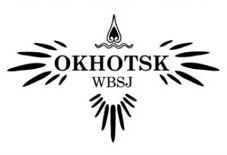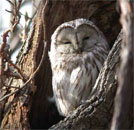Coastal Bird Surveys
Photo Diary
(From the Japanese website) [needs to be updated]
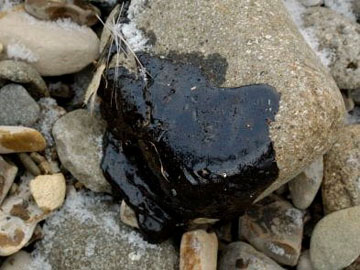 |
The ensuing survey of the Okhotsk coastline following the discovery of crude oil on this rock at Shiretoko turned up a total of roughly 5,600 dead seabirds, mostly in the Shiretoko area. (early spring 2006)
The fact that Northern Ravens led to the discovery of this awful calamity for seabirds contributed to our inspiration for the design of our Emblem. |
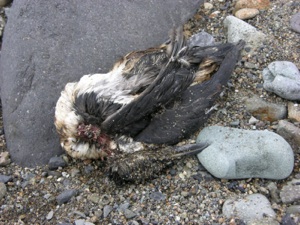 |
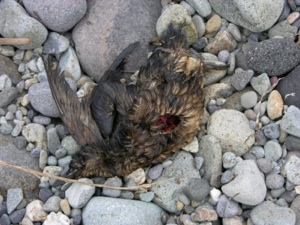 |
|
| The mouth of the Horobetsu River in Shiretoko was where the largest number of dead seabirds were found. On March 1, 2006, a few of us of the Okhotsk Chapter in our own survey found more than 500 dead birds. This caused considerable media coverage. Many of the dead carcasses had already been fed on by crows and eagles, and our fear that they would become contaminated themselves was born out a few days later when we found several dead bodies of Stellar's Sea-Eagles. Examinations of these eagles showed that they had died from internal organ damage after having fed on contaminated bisrd carcasses. Contact with the oil affected the birds in many different ways. The bird in the photo at left, a Thick-billed Murre (Uria lomvia), was partially covered with oil, while the bird in the photo at right, of the same species, was completely covered. (mouth of the Horobetsu River, north coast of Shiretoko, 1 March 2006) |
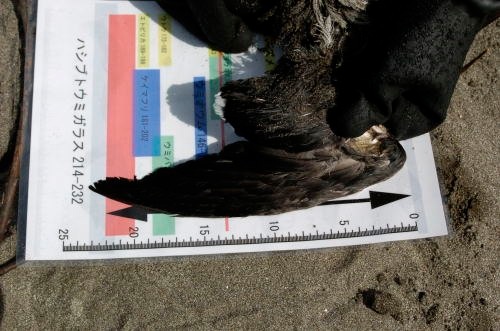 |
A scale, developed by Yoshiaki Watanabe of the Okhotsk Chapter, is being used to measure the wing of a dead bird found on a shore near the mouth of the Shari River. The wing lengths of various species of murres, murrelets, and auklets are noted with the scale and the paper is laminated, allowing the bird to be identified without the scale being affected by the bird's condition (which might be sticky with oil or partially decayed). The laminated scale is easily cleaned and used again. However, the scale is not entirely reliable, as little measured data on seabirds exists and not all the data is credible. (mouth of the Shari River, 27 March 2006) |
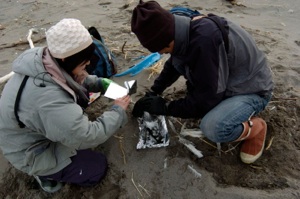 |
A dead bird that was partially covered with oil is being collected as a sample. Since the properties of oil change after contact with vinyl or ink, to ensure accurate identification of the type of oil it is, the oil-contaminated carcass is first carefully wrapped in aluminum foil before it is placed in the vinyl bag. Heavy paper bags not printed with ink can also be used. (mouth of the Shari River, 27 March 2006) |
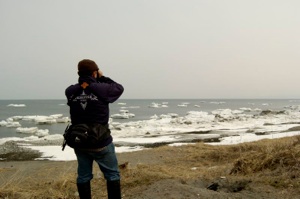 |
It is now a couple of years later, during the coastal survey in April 2008. Birds in the area are first counted and recorded. The birds are also checked for any contamination. (Hama Koshimizu, 8 April 2008) |
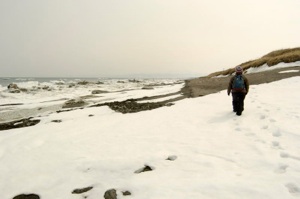 |
On this day, we also simply walked along the shore to check for anything that was washed up. We focused on areas where there were lots of shells or trash. We either walked in zigzags or split into two groups walking in parallel. (Hama Koshimizu, 8 April 2008) |
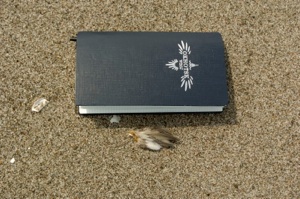 |
A clump of Murre feathers was found on the beach at Yambetsu, between Hama Koshimizu and Shari, during the survey in April 2008. Since it is not normal for feathers to fall off birds in clumps, we suspected it came from a dead bird that was washed up in the waves or was part of a bird that had been eaten and became dismembered. We try not to overlook small bits like this. It could be part of a body that is buried in the sand. (Yambetsu, 15 April 2008) |

